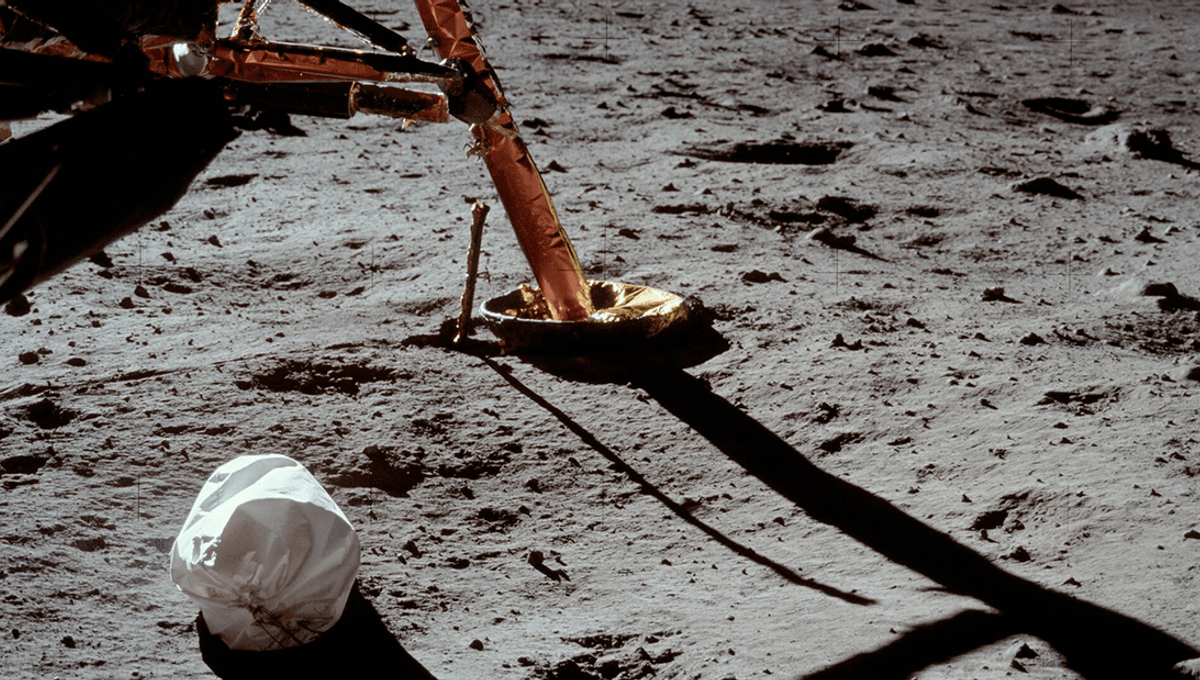
NASA has launched a new competition with an associated $3 million in prizes for help dealing with an old problem, as humans begin exploring the Moon again and, for the first time, Mars.
On the Moon, as well as several robots, some tardigrades, a family photograph, and maybe even some dinosaur remains, you will find 96 bags of human poop.
On the way up to the Moon, Apollo astronauts collected their urine in tanks, while anyone who needed to poop had to strap a bag over their anus to do so. These bags, along with other waste and trash, were taken to the Moon with the astronauts, who deposited them on the lunar surface to free up weight space for samples of the Moon. In fact, the first ever photograph taken on the Moon by Neil Armstrong featured one of these bags of trash.
While rovers and landers do not produce much waste, other than the robots themselves, humans produce it aplenty. It’s not just poop and pee, of course, but plenty of other waste materials and trash that builds up during long missions, or if we were to stay on the Moon in a lunar base. This is the problem NASA is currently appealing for help with in their LunaRecycle Challenge.
As NASA attempts to stay on the Moon for longer periods, inorganic waste like science equipment, clothing, and food packaging could become an issue. While NASA also attempts to reduce this waste in the first place, the organization is appealing for ideas and designs for technologies to recycle waste into useful products.
“Operating sustainably is an important consideration for NASA as we make discoveries and conduct research both away from home and on Earth,” Amy Kaminski, program executive for NASA’s Prizes, Challenges, and Crowdsourcing program, said in a statement. “With this challenge, we are seeking the public’s innovative approaches to waste management on the Moon and aim to take lessons learned back to Earth for the benefit of all.”
The competition will be split into two parts.
“The Prototype Build Track focuses on designing and developing hardware components and systems for recycling one or more solid waste streams on the lunar surface,” NASA explains. “The Digital Twin Track focuses on designing a virtual replica of a complete system for recycling solid waste streams on the lunar surface and manufacturing end products.”
Teams, who can register for the challenge here, will be able to compete in either or both tracks, with prize money divided between the two schemes.
“I am pleased that NASA’s LunaRecycle Challenge will contribute to solutions pertaining to technological needs within advanced manufacturing and habitats,” Kim Krome, acting program manager for agency’s Centennial Challenges, and challenge manager of LunaRecycle, added. “We are very excited to see what solutions our global competitors generate, and we are eager for this challenge to serve as a positive catalyst for bringing the agency, and humanity, closer to exploring worlds beyond our own.”
Source Link: NASA Offers $3 Million Prize To Help Them Figure Out Huge Problem In Moon Missions